The Secrets of Sfendoni Cave in the Heart...
From Neolithic findings to haunting legends,...
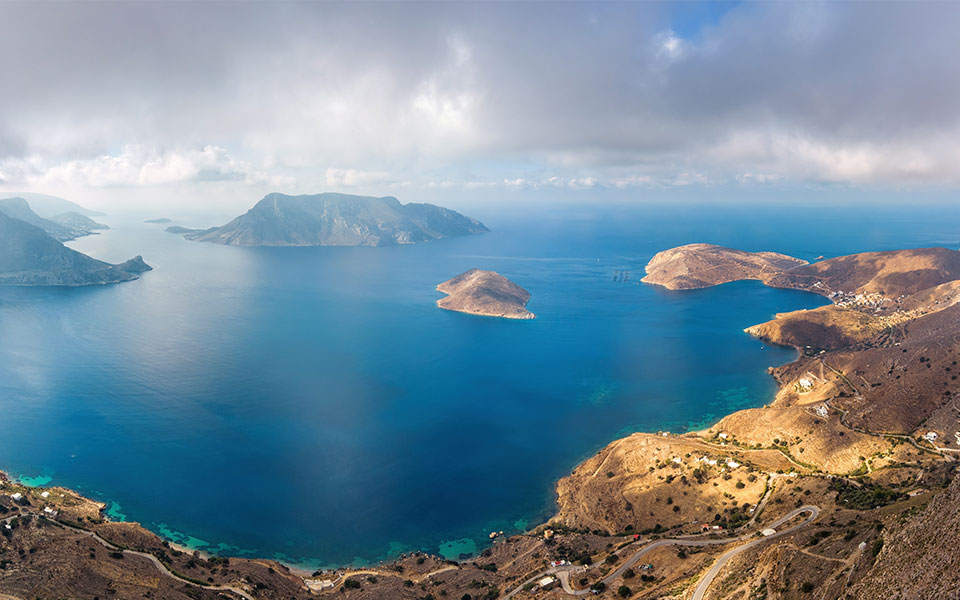
Telendos, in the southeast Aegean Sea. The tiny island was once part of Kalymnos, until an earthquake split the single land mass into two separate islands nearly 1,500 years ago.
Renowned for their rugged beauty, rich cultural heritage, and laidback way of life, the Greek islands have, in many ways, become synonymous with the country of Greece itself. After all, when people conjure up images of Greece, they often picture one of its many islands set against the sapphire blue waters of the Mediterranean Sea. But here’s the question: how many islands are there? And how are they grouped?
According to the Greek National Tourism Organization (GNTO), the country includes 6,000 islands and islets scattered across the Aegean and Ionian Seas, comprising a total land area of approximately 20,000 square kilometers. Of these, only around 227 are inhabited, with the rest being either uninhabited or periodically used for agriculture (including herding and grazing), fishing, and tourism.
The geography of the islands is varied, ranging from rocky and barren landscapes to lush, green forests and sandy beaches. Some of the islands are volcanic in origin, with Santorini being the most famous example. The majority of the islands are relatively small, with only a few exceptions like Crete, which is the largest and most populous island in Greece (over 630,000 year-round inhabitants), and Evia (190,000), which is connected to the mainland via a short bridge.
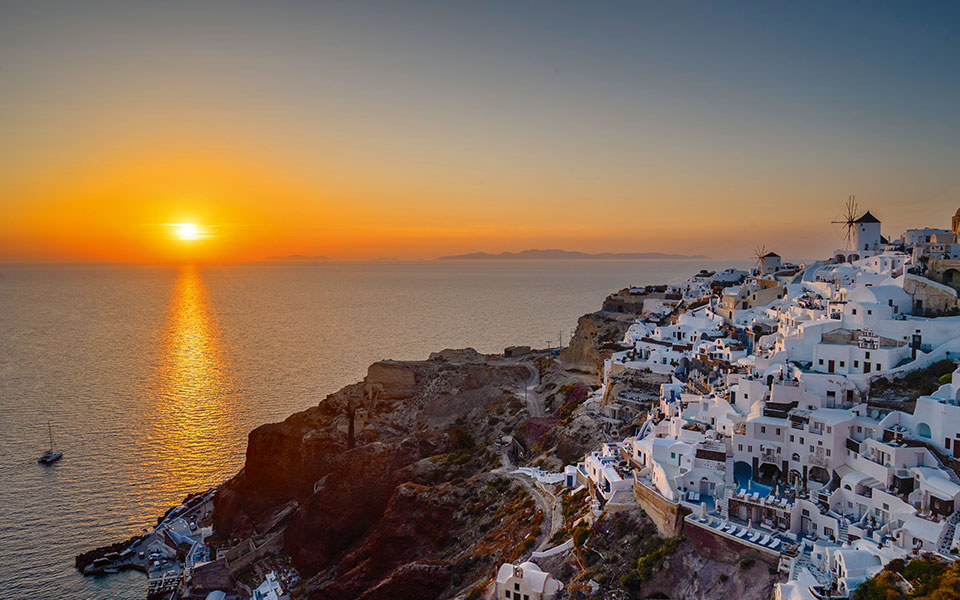
Oia, Santorini. One of the world's most famous sunsets.
© Perikles Merakos
In terms of biomass, the Greek islands are home to a diverse range of flora and fauna. The Mediterranean climate of the islands is ideal for the growth of olives, citrus fruits, and grapevines, which are widely cultivated in the region, and have been for thousands of years. The islands are also home to a number of endemic species, including the Cretan goat (Kri-kri) and the famous mastic trees of Chios.
The Greek islands have been inhabited since prehistoric times, with evidence of earliest permanent settlements dating back to the Neolithic period in the 7th millennium BC, when early farmers migrated from the east. The prehistoric settlement of Poliochni, located on the east coast of Limnos in the North Aegean, is widely believed to be the oldest “city” in Europe. The ancient Greeks believed that the islands were home to a number of gods and goddesses, and they played an important role in Greek mythology. According to the late 8th-early 7th century BC poet Hesiod, the goddess of love, Aphrodite, was born from the “sea-foam” off Kythira, the southernmost Ionian island (another version of the myth says she was born off the coast of Paphos, Cyprus).
Today, the islands are among the world’s most popular tourist destinations, attracting millions of visitors each year with their picturesque landscapes, historic sites, and vibrant culture. Despite their popularity among tourists, many of the Greek islands retain their traditional way of life, with small fishing villages and farming communities still playing an important role in the local economy. Some of the smaller, less-visited islands offer a glimpse into this traditional way of life, with narrow streets, whitewashed buildings, and local festivals that celebrate the islands’ cultural heritage.
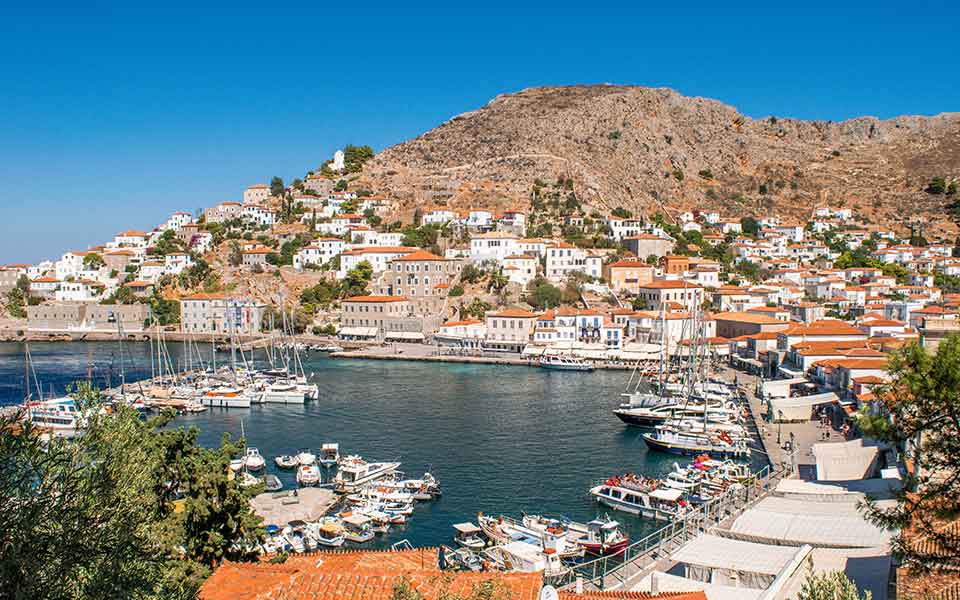
Hydra
© Shutterstock
The Greek islands are traditionally grouped into eight archipelagos, each with their own unique character.
Closest to Athens are the seven small islands of the Argolic and Saronic Gulfs, running down the eastern coastline of the Peloponnese. Grouped together as the “Argosaronic islands,” they consist of Salamina, Aegina, Agistri, Dokos, Poros, Hydra, and Spetses.
Home to picturesque villages and some wonderful beaches, the islands have become quite cosmopolitan over the years, attracting writers, artists and musicians. They have also become well known in the yachting world, Spetses hosting an annual regatta. Hydra has also famously banned all but a handful of “wheeled vehicles” on the island, including cars, motorbikes, and even bicycles (mules, donkeys, and sea taxis provide the only public transportation).
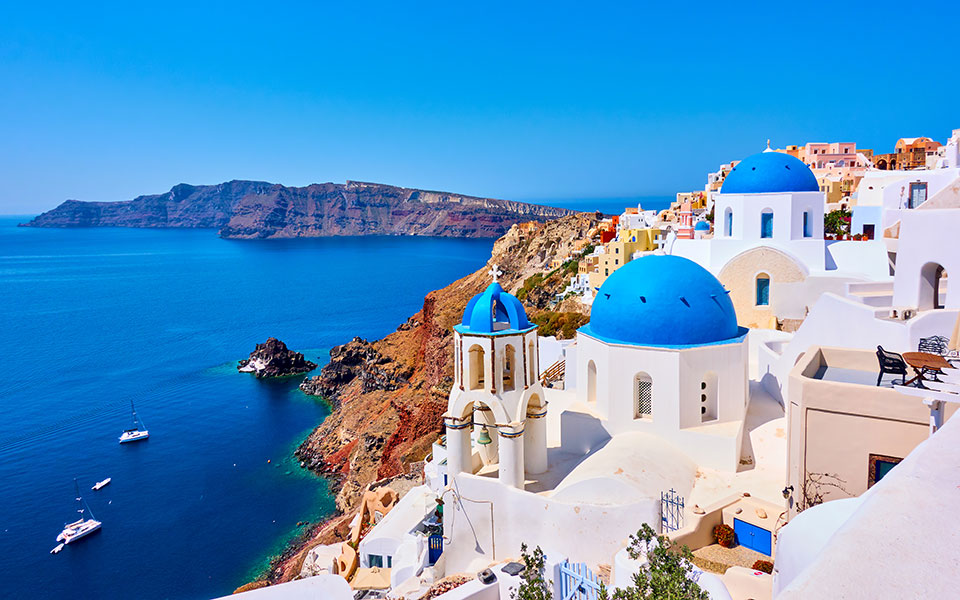
Santorini
© Shutterstock
The Cyclades, meaning “circular islands,” is arguably the most famous island complex in the Aegean, comprising some of the most beautiful (and romantic!) islands on the planet. The “flagship” of this archipelago, which consists of 220 mostly uninhabited islands and islets, is undoubtedly Santorini, famed for its stunning blue-domed churches, whitewashed buildings, and breathtaking views of the Aegean Sea. Other popular islands include Mykonos, known for its lively nightlife and picturesque windmills, Milos, for its mind-blowingly beautiful beaches, and Tinos, which is fast becoming a top destination for food-lovers.
Check out our A-to-Z Guide to the Cycladic islands here.
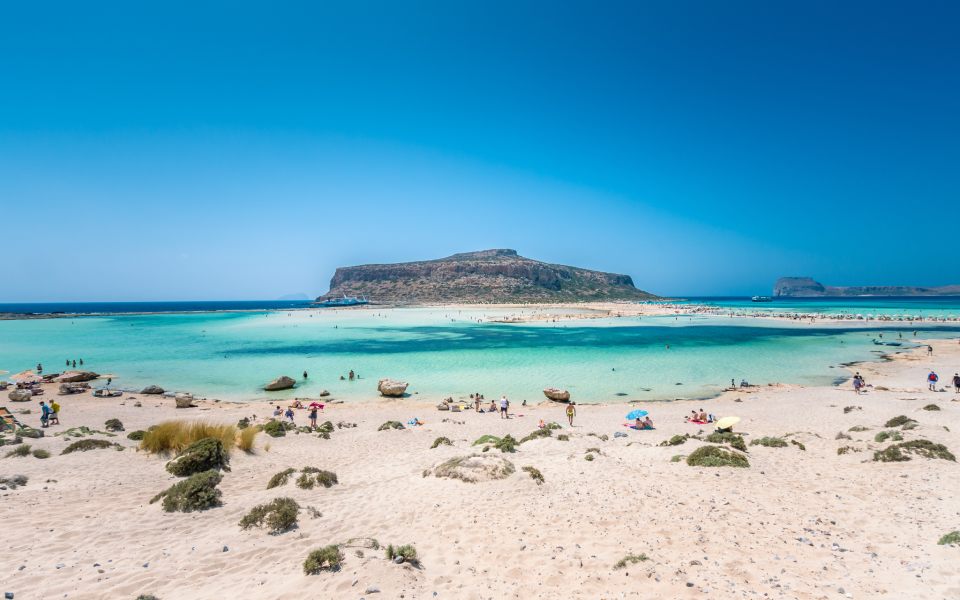
Balos Beach, Crete
© Shutterstock
The largest Greek island by both area and population is Crete, which proudly stands alone in its own category, stretched out in the far south of the Aegean. Over the years, Crete has become a hugely popular destination for families and outdoor enthusiasts, offering everything from hiking trails, cycling and climbing, to swimming, snorkeling and windsurfing. Its rich cultural heritage, including the world famous Palace of Knossos, heart of the mysterious Bronze Age Minoan civilization, makes it the ideal destination for archaeology buffs. Crete is also a fabulous destination for foodies. It’s often said that Crete’s greatest treasure is its cuisine, which includes all kinds of weird and wonderful things like “burbling snails”!
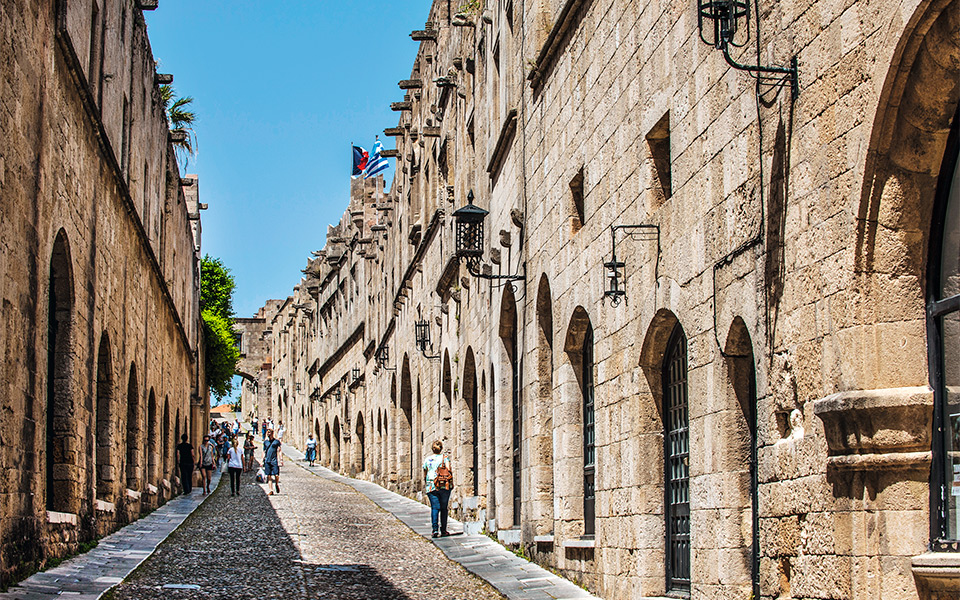
The Street of Knights in Old Town of Rhodes.
© Clairy Moustafellou
Nestled in the southeast corner of the Aegean, touted by the GNTO as the “sunniest corner in Greece,” are the Dodecanese islands. This complex includes 15 larger islands (confusingly, the name Dodecanese means “twelve islands”) and 93 smaller, mostly uninhabited islets.
Home to some of the best beaches in Greece, as well as some of the country’s most spectacular historical monuments, the most famous island is Rhodes, known for its medieval Old Town, a UNESCO World Heritage Site. The northernmost island of the group, Patmos, is renowned as the place where St. John wrote the Book of Revelations. Thanks to the venerable presence of the Monastery of St. John, the island has shunned the noisy night-life and madding crowds that have taken over elsewhere.
If you can’t decide whether you’d rather go to the mountains or the beach, then Karpathos is just the place for you. One of the most remote islands in the Dodecanese, it’s a place of contrasts, with lush green mountaintops and beaches with crystal-clear waters.
Check out our A-to-Z Guide to the Dodecanese islands here.
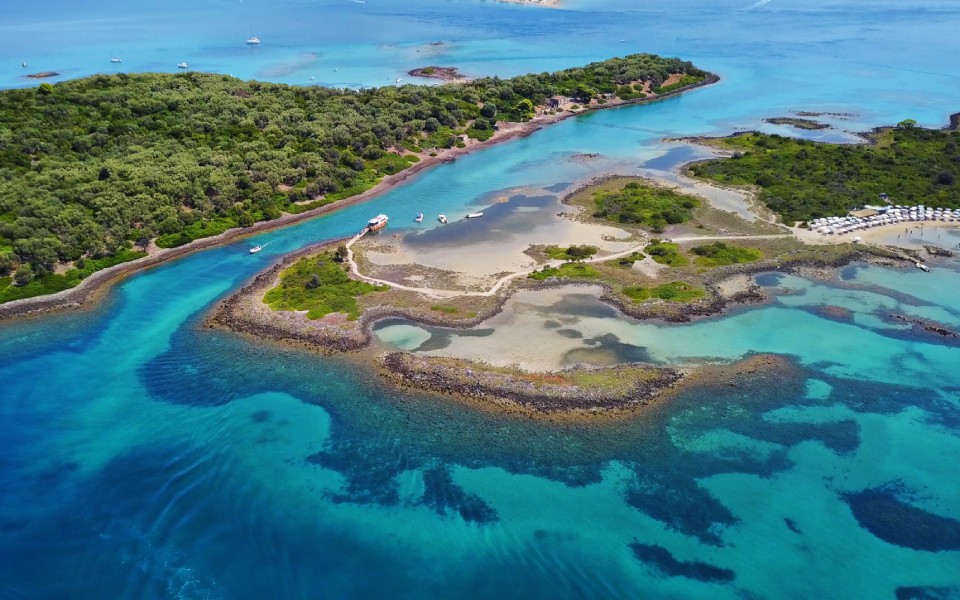
Lichadonisia, Evia
© Shutterstock
Another stand-alone, Evia (or Euboea), Greece’s second largest island, doesn’t really feel like an island at all. Connected to the mainland by a suspension bridge over the narrow Euripus Strait (40m wide at its narrowest point), the elongated island, which means “land of the well-fed oxen,” nevertheless boasts some amazing beaches, rustic villages, and hiking trails, which meander through spectacular, rugged landscapes.
Popular with Athenians wanting to escape the city, one of the island’s chief attractions is its easy accessibility (no ferry required), as well as the fact that it flies under the radar of most foreign visitors. For those willing to explore this island, there are plenty of charming elements, no least its quiet coastal towns, with guesthouses, tavernas and promenades for leisurely walks.
Click here for a local’s guide to Evia.
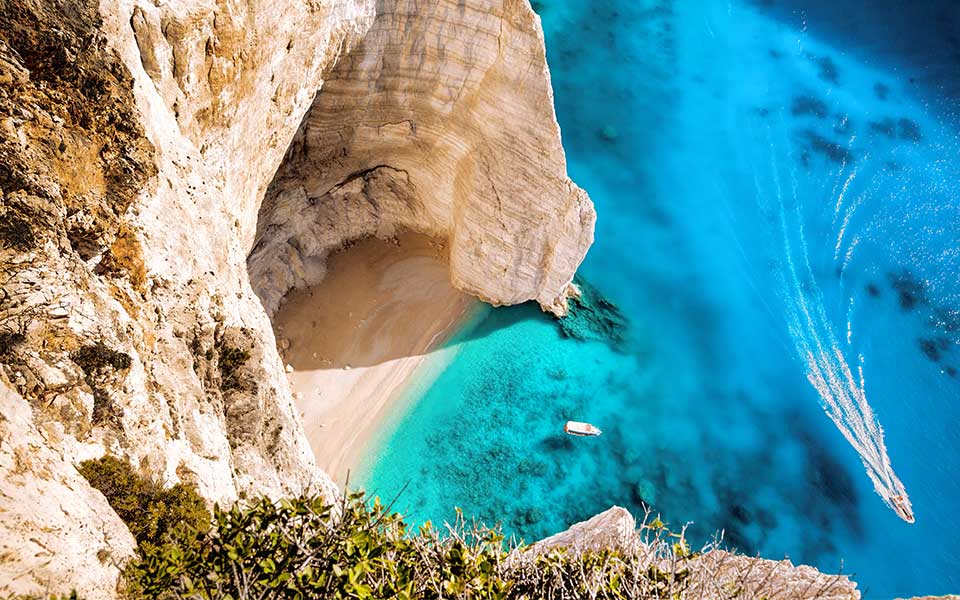
Zakynthos
© Shutterstock
Scattered off the western coastline of mainland Greece are the Ionian islands, comprising seven main islands (from north to south: Corfu, Paxi, Lefkada, Ithaki (Ithaca), Kefalonia, Zakynthos (Zante), and Kythira), and around 20 smaller, mainly uninhabited islets.
As cliché as it sounds, there is something for everyone in the Ionian islands, renowned for their beautiful natural landscapes, beaches, caves, waterfalls, and rich, historical traditions. The most famous is Corfu, the “grande dame” of the Ionian. From the narrow “kantounia” streets to the wide pavements, and from Spianada to the pedestrian street of Liston, reminiscent of San Marco square in Venice, the city of Corfu, a UNESCO World Heritage Site, offers limitless visual appeal for history buffs and culture lovers.
Easy-to-get-to Lefkada, further south, can reached by simply driving across a causeway. Known for its wide sandy beaches and turquoise seas, Lefkada is a great destination for beginner sailors, thanks to its steady and predictable wind patterns. Zakynthos is a beautiful island that is known for its stunning Blue Caves and Shipwreck Beach, which are some of the most photographed spots in Greece. The island is also home to a variety of wildlife, including loggerhead sea turtles (Caretta caretta) and monk seals (Monachus monachus).
Click here for our whistle-stop guide to the Ionian islands.
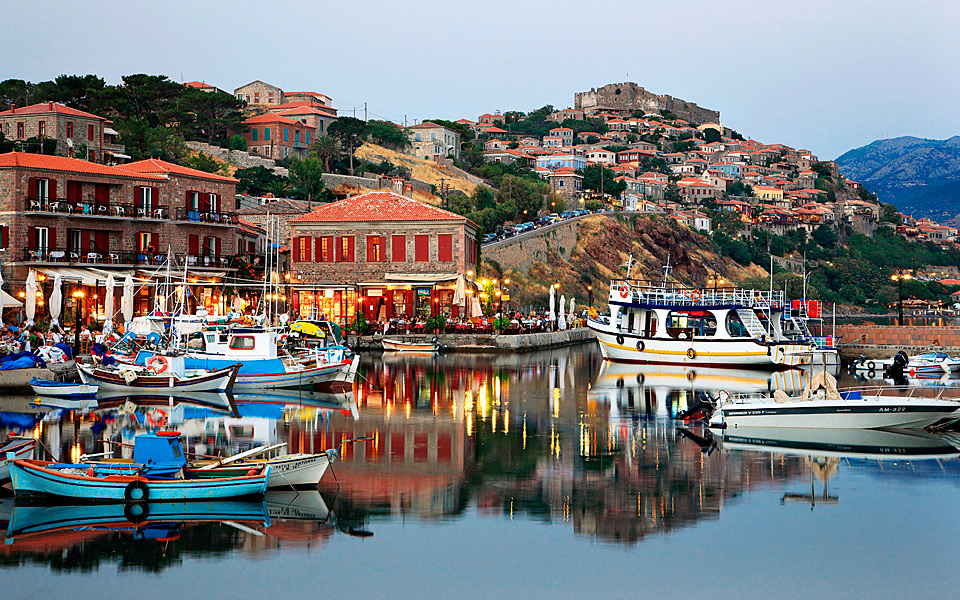
Molivos, Lesvos
© Shutterstock
Within touching distance of Turkey, the loose group of islands in the North Aegean include seven principal islands (Samos, Ikaria, Chios, Lesvos, Limnos, Thasos, and Samothrace) and a cluster of smaller ones (including Aghios Efstratios, Psara, Fournoi, Oinousses, Aghios Minas, Antipsara, Thymaina, and Samiopoula).
Famous for its citrus trees (amazing tangerines!) and mastic, Chios is a combination of many islands in one, boasting rustic villages and fragrant orchards that go on for miles. The complex is also home to the island of Ikaria, famed for its unspoiled beauty and traditional way of life of life. The islanders are also known for their longevity, with a staggeringly high percentage of centenarians among them. The large island of Lesvos is interesting for its architecture and exuberant gastronomy (olive oil, sardines, and the home of ouzo).
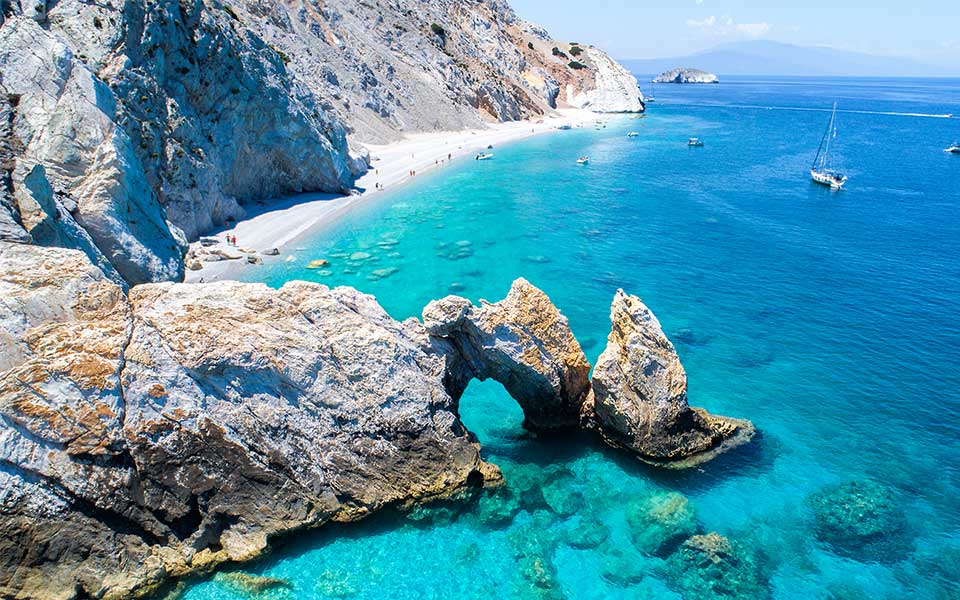
Skiathos
© Shutterstock
The smallest archipelago of Greek islands is the (Northern) Sporades group, located along the east coast of the mainland and northeast of Evia. The tightly-packed group consists of 24 islands in total, but only four are permanently inhabited: Alonnisos, Skiathos, Skopelos and Skyros.
Boasting beautiful sandy beaches, luxury hotels, and protected bays filled with yachts, the Sporades are especially popular for families looking for that fun, hassle-free vacation by the sea. It’s also home to Mediterranean’s largest marine park – the National Marine Park of Alonissos Northern Sporades, established for the protection and conservation of the region’s many rare and endangered species of flora and fauna, including the reclusive Mediterranean monk seal (Monachus monachus).
Click here for our bumper guide to the Sporades.
From Neolithic findings to haunting legends,...
Discover Pyrgi in Chios, a medieval...
Where tropical fruit trees thrive beside...
A compact archaeological guide to the...